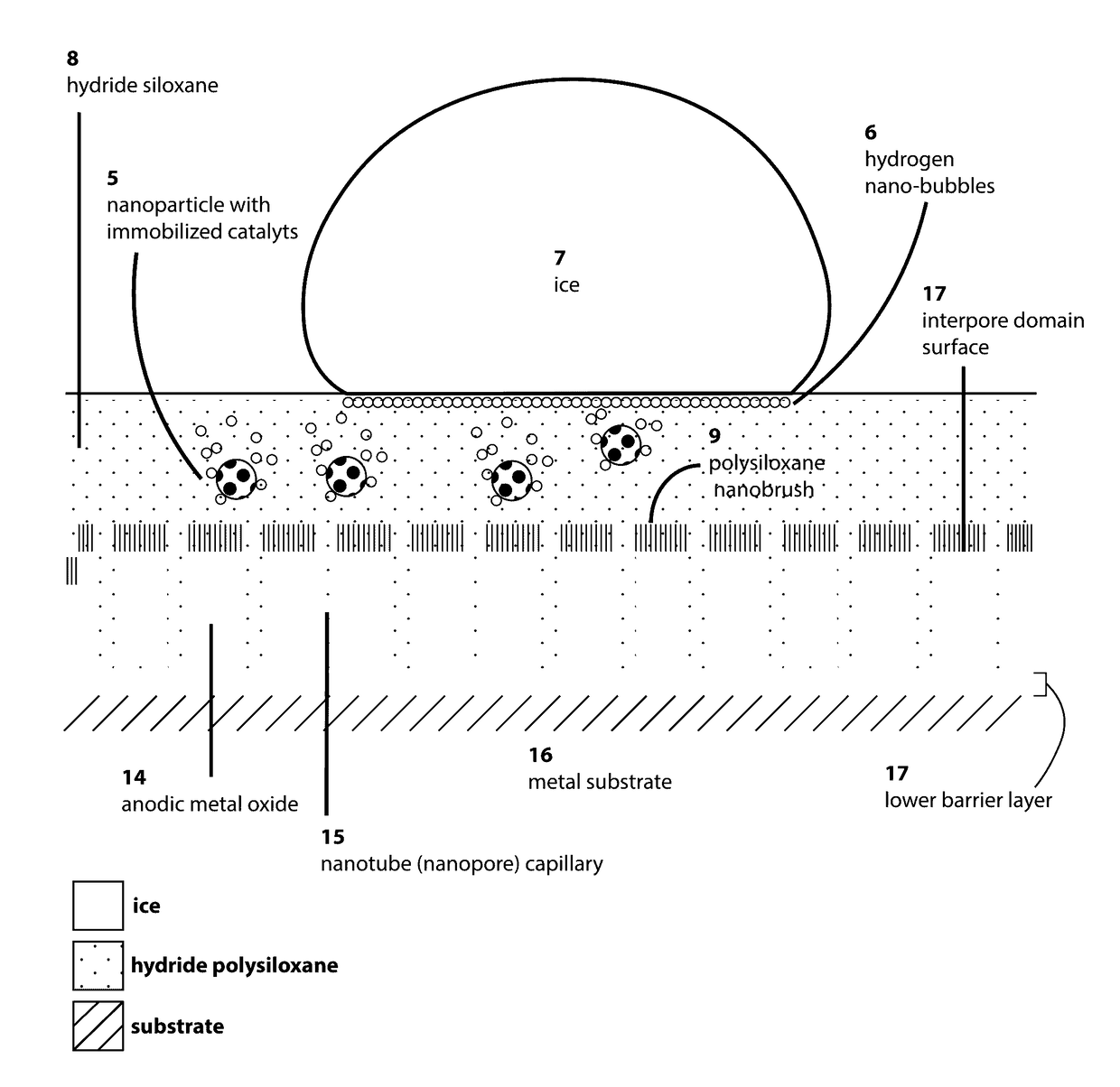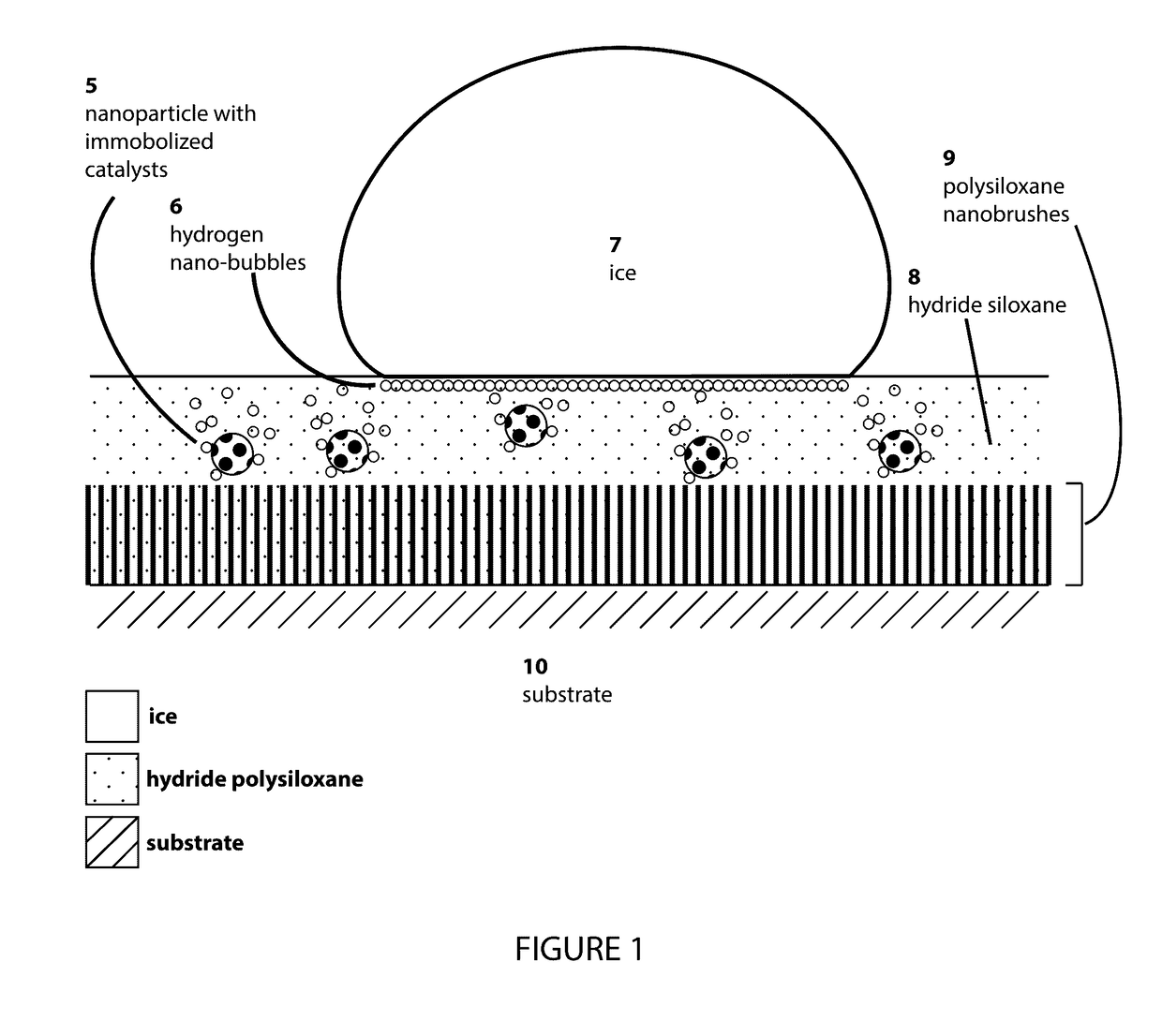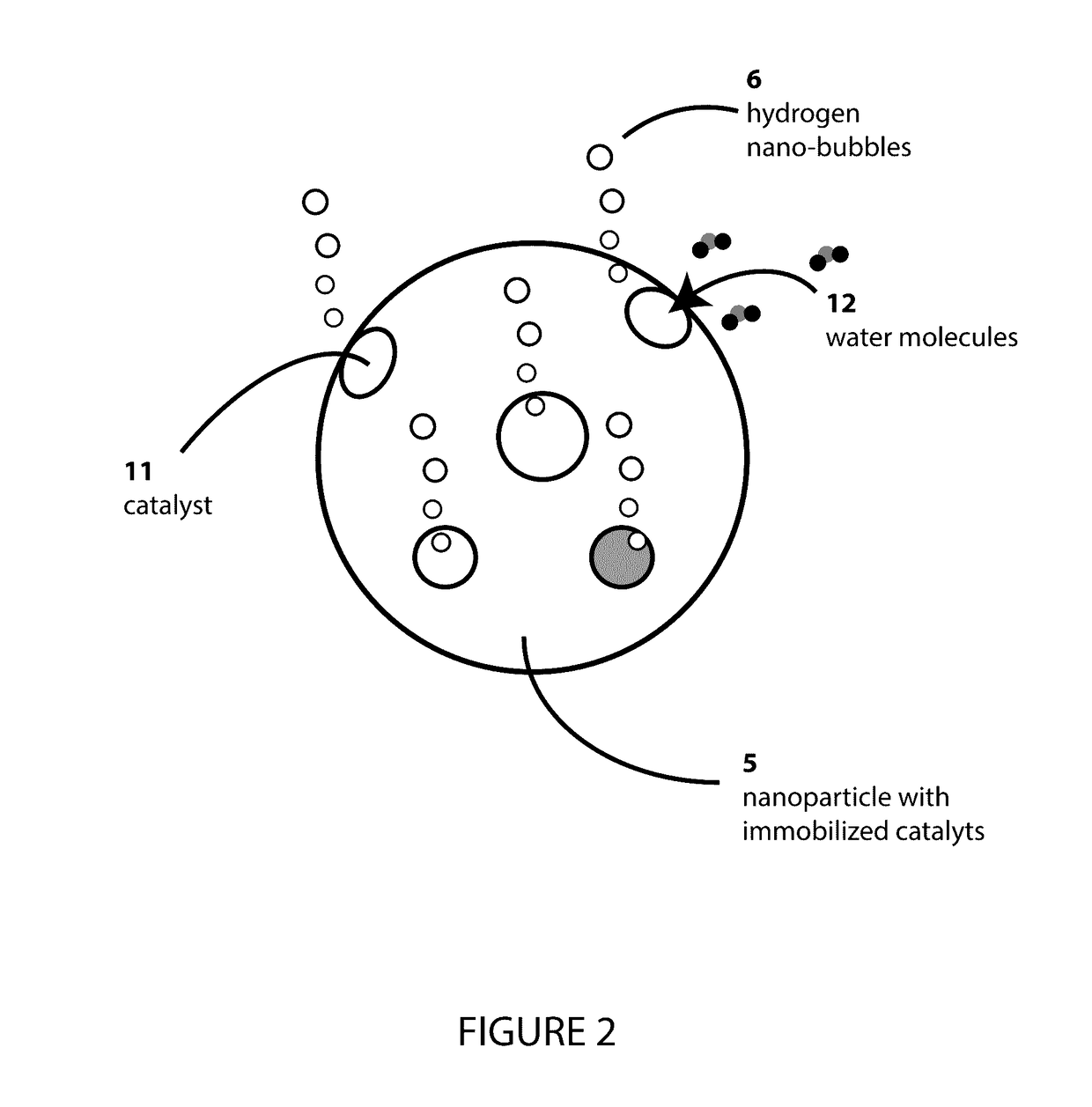Anti-icing composition driven by catalytic hydrogen generation under subzero temperatures
a technology of hydrogen generation and anti-icing composition, applied in the direction of coating, chemistry apparatus and processes, other chemical processes, etc., can solve the problems of starving the reactants of both water and hydride polysiloxane, and water droplets quickly run off, and achieve low hysteresis and low surface energy
- Summary
- Abstract
- Description
- Claims
- Application Information
AI Technical Summary
Benefits of technology
Problems solved by technology
Method used
Image
Examples
example 1 (
Preparation of Glass Surface Silane Residue Remover)
[0233]Ethanol (reagent grade, denatured) and potassium hydroxide (reagent grade) were purchased from Aldrich. 10 g of potassium hydroxide (10 g, 0.178 mol) and 48 g of ethanol were added to a 125 ml narrow-mouth Erlenmeyer flask and stirred for 4 hours. The appearance of the alkali solution of KOH-saturated ethanol changed from colorless and transparent to a dark brown liquid.
example 2 (
General Procedure for Anti-Icing Tests)
[0234]Clean soda-lime-silica watch glasses (diameter ˜82 mm) were used as substrates. Any traces of alkyl silane 2D surface networks on watch glass surfaces were removed using a treatment with the solution obtained in Example 1, wherein the watch glasses were immersed in the solution for one hour, followed by rinsing in distilled water. The residue-free watch glasses were then dried in a Blue M® gravity convection oven at 110° C. for 2 hours and cooled to room temperature. The resulting watch glass surfaces were hydrophilic.
[0235]Anti-icing tests were conducted under −20 to −30° C. in a Thermo Scientific Revco® Ultima upright freezer. Distilled water with a volume of 47 microliters and a contact surface of around 0.25 cm2 was dripped onto each watch glass. After freezing, a force gauge (Shimpo FGV-50XY or Shimpo FGV-5XY) was used to measure ice removal force.
example 3 (
Anti-Icing Tests: Polydimethylsiloxane Coated Watch Glass)
[0236]Trimethylsiloxy terminated polydimethylsiloxane was purchased from Gelest, Inc. Inert polydimethylsiloxanes (CAS: 9016-00-6) with an average molecular weight of 550 (DMS-T03), 2,000 (DMS-T12), 28,000 (DMS-T31), 204,000 (DMS-T53), and 423,000 (DMS-T63) were each coated onto the five sets of watch glasses using Kimwipes®. The thicknesses of the polysiloxane coatings were in the range of 0.75-2.5 microns. No samples showed ice removal forces smaller than 1.0 kg·f / cm2.
PUM
| Property | Measurement | Unit |
|---|---|---|
| Temperature | aaaaa | aaaaa |
| Temperature | aaaaa | aaaaa |
| Electrical resistance | aaaaa | aaaaa |
Abstract
Description
Claims
Application Information
 Login to View More
Login to View More - R&D
- Intellectual Property
- Life Sciences
- Materials
- Tech Scout
- Unparalleled Data Quality
- Higher Quality Content
- 60% Fewer Hallucinations
Browse by: Latest US Patents, China's latest patents, Technical Efficacy Thesaurus, Application Domain, Technology Topic, Popular Technical Reports.
© 2025 PatSnap. All rights reserved.Legal|Privacy policy|Modern Slavery Act Transparency Statement|Sitemap|About US| Contact US: help@patsnap.com



